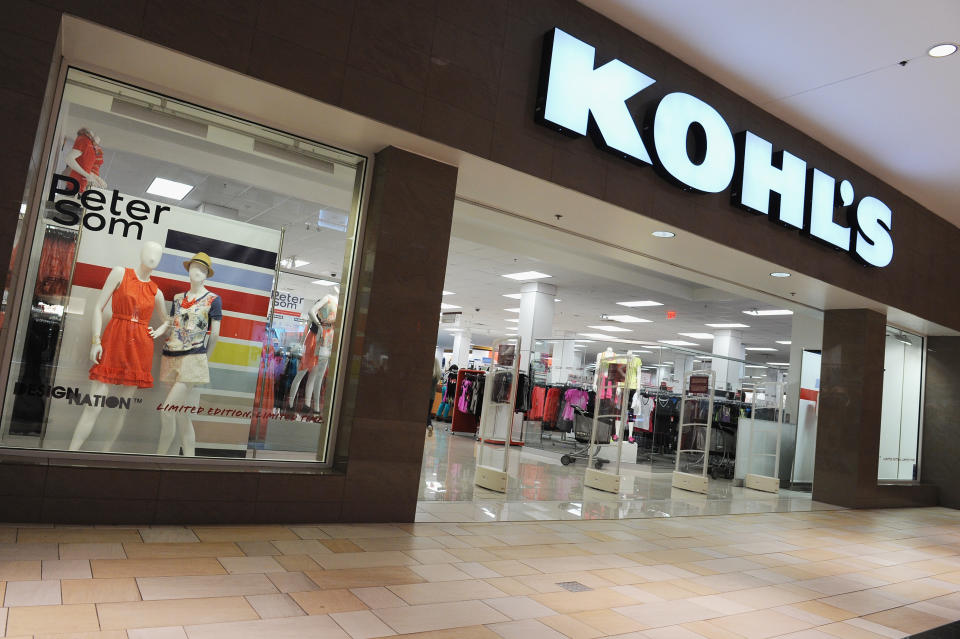Kohl’s CEO Says Tech Will Spare His Stores From Retail’s Shakeout
The year 2017 has generated a constant drumbeat of mass store closure announcements by major retailers hit by chronically declining sales.
But , which earlier this year said it would reconfigure hundreds of stores to shrink them rather than close them, is bucking that trend, saying that physical locations, with a few tech tweaks, are essential as rivals wither and e-commerce rises.
Kohl’s Chief Executive Kevin Mansell takes umbrage at his company being lumped in with struggling department stores like , Sears and , noting that in contrast to those rivals, only 5% of his stores are in malls. But Mansell says his company has the wherewithal, thanks to a strong financial position, to keep investing in the stores as Kohl’s rides the current retail storm. The chain looks to be best-in-class when it comes to blending e-commerce and stores: Already 25% of online orders are filled by a store, rather than a distribution facility. That is a key tool for weathering the intense competition from the likes of , which is claiming more and more of the apparel and home goods market that is Kohl’s bread and butter.
But Kohl’s has to contend with the exigencies of the business its in. It has posted five straight quarters of comparable sales declines, including an expectedly large first-quarter drop of 2.7%, and it gets some 40% of its sales from apparel, a languishing area in retail. So the smaller stores are meant to maintain a physical presence near as many customers as possible for both awareness building and for faster delivery purposes. (Penney and Macy’s have each said that e-commerce sales often dip in areas where they have closed stores; out of sight, out of mind.) Kohl’s already has 200 smaller stores and this winter began reconfiguring another 300, in a fleet of some 1,160 locations. (The average Kohl’s is about 85,000 square feet, about two-thirds the size of a typical mall-based Macy’s.)
“We have to rethink how we operate our stores, and that probably means they’ll be smaller,” Mansell told Fortune in an interview this week at a Kohl’s store in Clifton, N.J. So far, the shrunken stores are performing roughly in line with the rest of the 1,160-store chain. But the difference, Mansell says, is that inventory is down as much as 10% at those smaller stores, with the help of more refined planning and demand forecast tools--and that boosts their profitability.
What’s more, Mansell points to Kohl’s financial strength compared to its peers, a number of whom now have debt rated below investment grade. He says the company will continue to invest as needed in tech, especially as some rivals struggle: Kohl’s has in the last three years pumped $2 billion into its technology and $1 billion into its stores.
“We have to be willing to make investments for the long term when others can’t and suck it up in the meantime while the sector is weak,” he said. At the same time, he recognized the pressure on profits from those investments and the fact that online sales are less profitable than store sales for the company. Kohl’s market cap is about $6.5 billion now, barely half of what it was in early 2015, because of investor fears about the retailer’s chronically sluggish top line. “We’re going to get criticized because we’re not getting sales results quickly enough,” he said.
Much like his counterpart at , Brian Cornell, who this week told Fortune’s Brainstorm Tech conference that innovation would have to be centered on improving customer experience rather than shiny toys, Mansell is focusing his tech spending on prosaic but essential capabilities. Those include things like knowing which stores need how many shirts of a given make and size, and which stores nearby have it in stock and can fill any gaps. That is all the more crucial given that Mansell is looking to keep store worker costs in check in an environment of rising wages and declining sales and wants to minimize how many times a worker handles a given piece of merchandise.
But his tech investments also are also centered on Kohl’s shopping app and mobile payment app, elements that are critical to wringing more business out of existing customers and keeping them loyal. Kohl’s reinvented its own loyalty program in 2015--among other reasons, to make it more appealing to people who don’t have a store card or can’t qualify for one. It now has 30 million members, making it one of the most effective such programs in retail. And keeping customers loyal is key at a time many are simply going to Amazon Prime and staying away from stores, whether at the mall or out. (Kohl’s garners about $800 million a year in sales of products alone, and now must contend with Amazon selling the sports gear company’s merchandise directly rather than via third-parties.)
All told, Mansell seems to betting that Kohl’s can weather the big retail storm that is shaking out many competitors, and emerge on the other side as a leader with greater market share.
“If you look down the road in five years, we’ll still have 1,200 stores but they’ll be smaller,” Mansell said. He added: ” We’re planning the future. We are not planning ‘How do we get through the next few years?”
See original article on Fortune.com
More from Fortune.com


